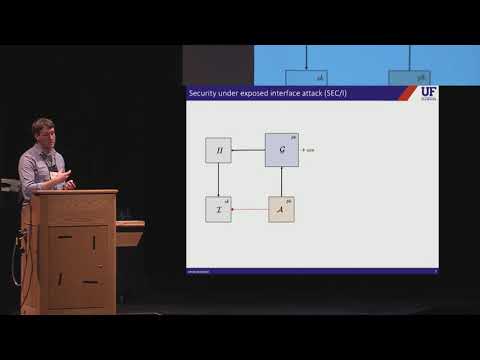CryptoDB
Security in the Presence of Key Reuse: Context-Separable Interfaces and Their Applications
| Authors: | |
|---|---|
| Download: |
|
| Abstract: | Key separation is often difficult to enforce in practice. While key reuse can be catastrophic for security, we know of a number of cryptographic schemes for which it is provably safe. But existing formal models, such as the notions of joint security (Haber-Pinkas, CCS ’01) and agility (Acar et al., EUROCRYPT ’10), do not address the full range of key-reuse attacks—in particular, those that break the abstraction of the scheme, or exploit protocol interactions at a higher level of abstraction. This work attends to these vectors by focusing on two key elements: the game that codifies the scheme under attack, as well as its intended adversarial model; and the underlying interface that exposes secret key operations for use by the game. Our main security experiment considers the implications of using an interface (in practice, the API of a software library or a hardware platform such as TPM) to realize the scheme specified by the game when the interface is shared with other unspecified, insecure, or even malicious applications. After building up a definitional framework, we apply it to the analysis of two real-world schemes: the EdDSA signature algorithm and the Noise protocol framework. Both provide some degree of context separability, a design pattern for interfaces and their applications that aids in the deployment of secure protocols. |
Video from CRYPTO 2019
BibTeX
@article{crypto-2019-29879,
title={Security in the Presence of Key Reuse: Context-Separable Interfaces and Their Applications},
booktitle={Advances in Cryptology – CRYPTO 2019},
series={Lecture Notes in Computer Science},
publisher={Springer},
volume={11692},
pages={738-768},
doi={10.1007/978-3-030-26948-7_26},
author={Christopher Patton and Thomas Shrimpton},
year=2019
}

